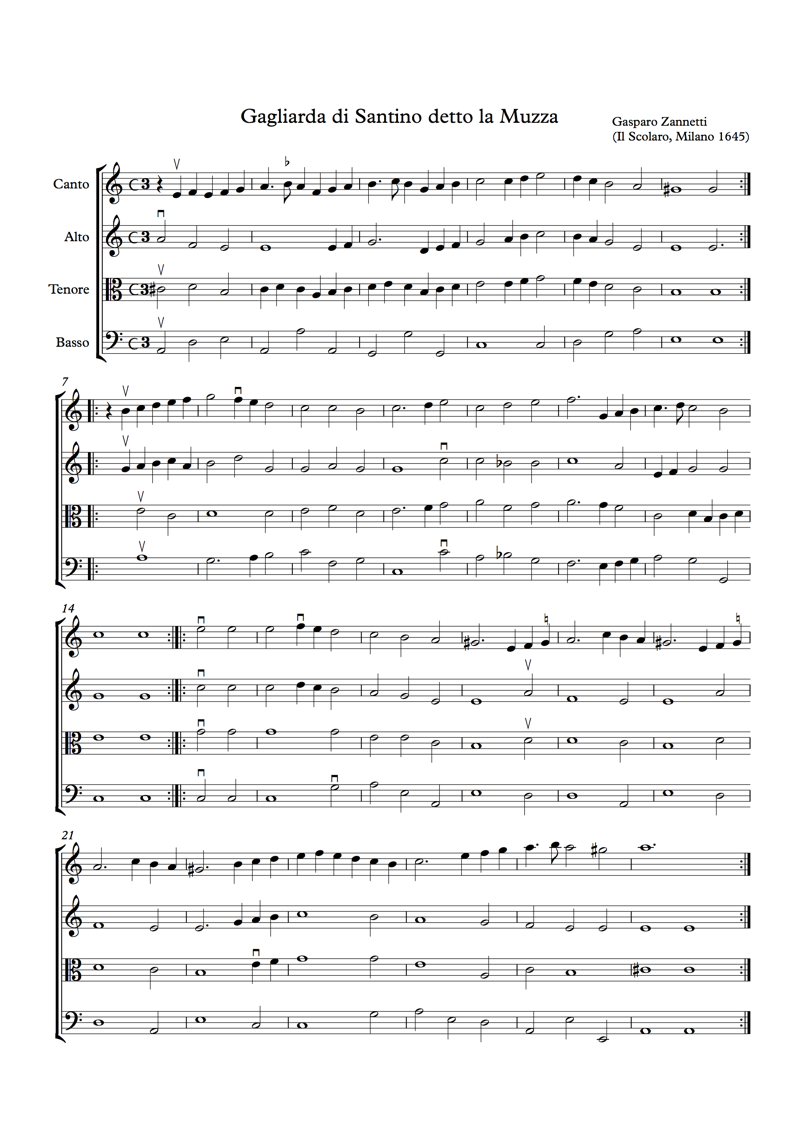A Timeline history of the Violin Bow - from c. 1600 - 1800
... the sources in detail ...
Zanetti, Gasparo (fl Milan 1626-45)
Il Scolaro per imprarar a suonare di Violino, et altri Stromenti (1645)
(An online facsimile is available on imslp, here)
We know next to nothing about Zanetti, other than that he contributed to a a collection entitled Flores praestantissimorum virorum, and he wrote this tutor. We surmise, therefore, that he might have been a violinist. Or not?
This Scolaro consists of a set of dances by various (un-named) composers for quartet (Canto, Alto, Tenore, Basso) with tablature alongside normal notation, and occasional bowing (T = tirare = downbow, P = pontare = upbow). The level, unlike the two Rognonis, is quite elementary, but it demonstrates a few extremely interesting points:
1) exclusive use of 1st position and open strings (no 4th finger),
2) that the bass instrument was tuned a tone lower than the modern cello Bb-F-C-G
3) bowing - which seems to be designed to get to the ‘goal’ on a down bow, with the minimum of adjustment. “As it comes” looks to be the guiding rule, and if starting a strong beat with an up bow is the easiest way to achieve a down at the end, then so be it!
Here is an example - the Galliard di Santino detto la Muzza (put into score for ease of understanding, you can follow the links to see the original tablature and parts). Here one can clearly see some of the issues. There are many places, where I cannot understand any organising principle - for example, compare the Tenore and Basso in bars 15-17; they have the same rhythm, but the Basso adjusts with a down-bow on the third beat of bar 15 (awkward?), and the Tenore on the third beat of bar 17 (also awkward?).
1) exclusive use of 1st position and open strings (no 4th finger),
2) that the bass instrument was tuned a tone lower than the modern cello Bb-F-C-G
3) bowing - which seems to be designed to get to the ‘goal’ on a down bow, with the minimum of adjustment. “As it comes” looks to be the guiding rule, and if starting a strong beat with an up bow is the easiest way to achieve a down at the end, then so be it!
Here is an example - the Galliard di Santino detto la Muzza (put into score for ease of understanding, you can follow the links to see the original tablature and parts). Here one can clearly see some of the issues. There are many places, where I cannot understand any organising principle - for example, compare the Tenore and Basso in bars 15-17; they have the same rhythm, but the Basso adjusts with a down-bow on the third beat of bar 15 (awkward?), and the Tenore on the third beat of bar 17 (also awkward?).

Ultimately, I'm not sure how seriously we should take this source. Could these bowing directions be devised simply for beginners who might have difficulties with adjustments (two ups following on another, or a new down on a barline)? To regard this source as a reflection of contemporary professional practice seems somewhat optimistic, I fear.